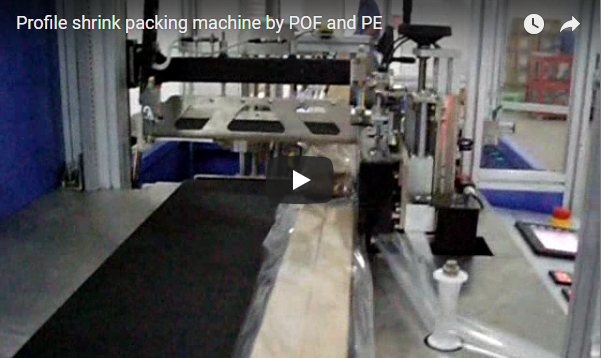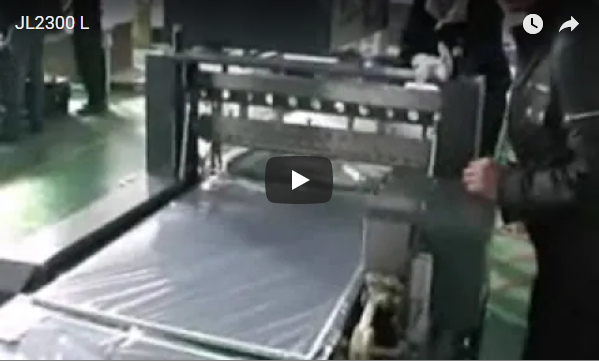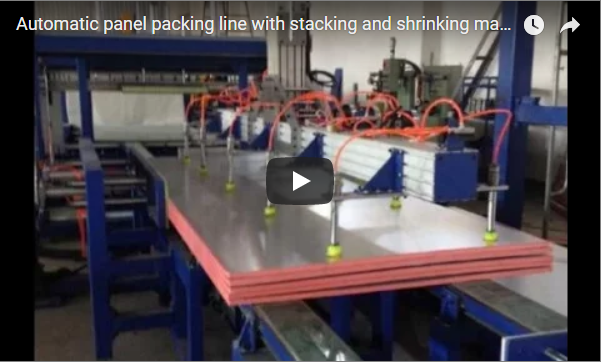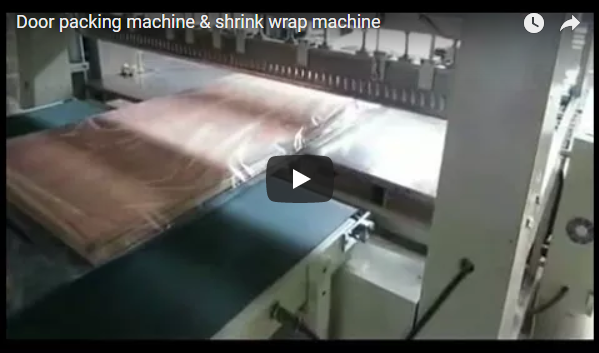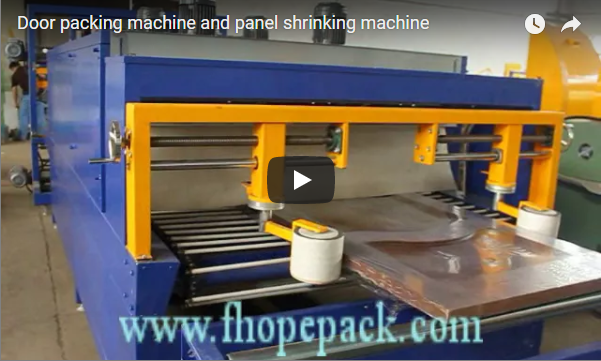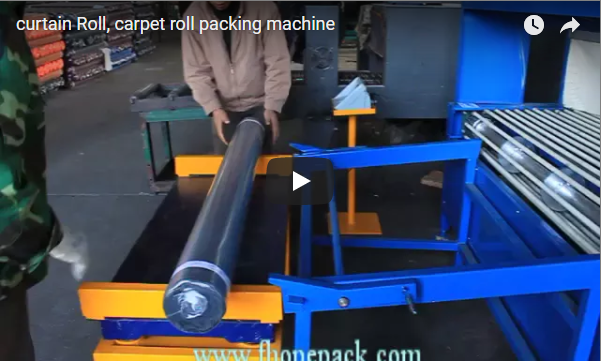Enhancing Carpet Roll Packaging: An In-Depth Look at Automatic Shrink Wrapping Systems
1. Introduction: The Need for Efficient Carpet Roll Packaging
The packaging of large, bulky items like carpet rolls presents unique challenges for manufacturers and distributors. Ensuring product protection during transit and storage, maintaining a professional appearance, and optimizing operational efficiency are critical concerns. This article explores an automated shrink packaging solution designed specifically for carpet rolls, as demonstrated in the video above, focusing on its technical aspects, operational benefits, and considerations for implementation, aligning with the informational style often found in industry resources like Packaging World. The system featured includes in-feed and out-feed conveyors, automatic film bagging, sealing, and a shrink tunnel.

2. The Challenge: Limitations of Manual Packaging Methods
A common scenario, exemplified by a carpet manufacturer in Mexico City prior to automation, involves manual or semi-manual packaging processes. These methods often encounter significant drawbacks:
- Labor Intensity: Manually wrapping large, heavy carpet rolls is physically demanding and time-consuming, leading to high labor costs.
- Inconsistent Quality: Achieving a consistently tight, uniform, and aesthetically pleasing wrap manually is difficult, potentially impacting brand perception.
- Worker Safety: Repetitive lifting and handling of heavy rolls pose ergonomic risks and increase the potential for workplace injuries.
- Throughput Bottlenecks: Manual processes inherently limit the speed of the packaging line, hindering overall production output.
- Material Waste: Inconsistent application can lead to excessive use of packaging film.
3. The Automated Solution: Sealing and Shrinking System Overview
The automatic sealing and shrinking system provides a comprehensive solution to these challenges by automating the entire packaging cycle.
3.1. Core Components and Operational Flow
A typical system integrates several key components working in sequence:
- In-feed Conveyor: Transports the carpet roll into the packaging station. Conveyor type (e.g., belt, roller) can be adapted based on product characteristics.
- Automatic Film Bagging/Wrapping: Dispenses the appropriate length of shrink film (commonly Polyethylene - PE) and creates a bag or sleeve around the roll.
- Sealing Station: Employs a sealing bar (often L-bar or side-seal configuration) to create a secure closure around the film-covered roll.
- Shrink Tunnel: The sealed roll passes through a heated tunnel. Controlled hot air circulation causes the shrink film to conform tightly to the shape of the roll, creating a durable, protective layer. Infrared quartz heaters are commonly used for their efficient heat transfer.
- Out-feed Conveyor: Transports the finished, shrink-wrapped roll away from the machine, often incorporating cooling fans to help set the film quickly.
3.2. Key Technical Specifications and Customization
These systems are typically designed with flexibility in mind:
- Product Dimensions Handling:
- Maximum Diameter: Often adaptable up to around 600mm.
- Length Range: Can accommodate rolls from approximately 500mm up to 3000mm or more, depending on the model configuration.
- Shrink Tunnel Parameters:
- Heating Method: Infrared quartz heaters (as mentioned) or convection systems.
- Temperature Control: Adjustable temperature settings, potentially reaching up to 300°C, allowing fine-tuning for different film types and thicknesses (e.g., PE films of varying gauges).
- Film Compatibility: Primarily designed for LDPE (Low-Density Polyethylene) shrink film, offering good strength and puncture resistance suitable for heavy products.
- Operational Speed: Throughput varies based on roll size and film characteristics but significantly surpasses manual methods, often measured in rolls per hour.
- Power Requirements: Dependent on machine size and tunnel heating capacity (typically 3-phase power).
- Control System: Often utilizes PLC (Programmable Logic Controller) for process automation and parameter adjustments via an HMI (Human-Machine Interface).
4. Operational Benefits and Efficiency Gains
Implementing an automated shrink packaging system for carpet rolls yields substantial advantages:
- High-Efficiency Packaging: Automation drastically reduces the cycle time per roll, significantly boosting overall packaging line throughput and productivity.
- Labor Cost Reduction: Minimizing manual intervention directly reduces the number of operators required for the packaging task, leading to significant labor cost savings.
- Enhanced Worker Safety: Automating the handling and wrapping of heavy carpet rolls mitigates ergonomic risks and reduces the likelihood of manual handling injuries.
- Consistent Package Quality: The machine ensures uniform film application, secure seals, and a consistent, wrinkle-free shrink finish, enhancing product protection and professional appearance.
- Optimized Material Usage: Automated film dispensing and cutting can lead to more precise material usage compared to manual methods, reducing waste.
- Improved Market Competitiveness: A professionally packaged product conveys higher quality and value, strengthening brand image and market position.
- Simplified Maintenance: Systems are generally designed with accessibility in mind for routine cleaning, lubrication, and replacement of wear parts like sealing wires or blades, ensuring uptime and longevity.

online stretch wrapper with v belt 5. Implementation Considerations
Integrating such a system requires careful planning:
- Floor Space: Ensure adequate space for the machine footprint, including in-feed/out-feed conveyors and operator access.
- Utilities: Verify sufficient electrical power supply (voltage, phase, amperage) and compressed air if pneumatic components are used.
- Operator Training: Personnel need training on machine operation, parameter settings (e.g., temperature, conveyor speed, seal time), safety procedures, and basic troubleshooting.
- Maintenance Schedule: Establish a routine preventive maintenance schedule based on manufacturer recommendations to ensure optimal performance and longevity.
6. Frequently Asked Questions (FAQs)
- How does the automatic sealing and shrinking system improve packaging efficiency?
- By automating the entire sequence—feeding, film application, sealing, and shrinking—the system dramatically reduces the time required to package each roll and allows for continuous operation, increasing overall throughput compared to stop-and-start manual methods.
- Can the system handle different sizes of carpet rolls?
- Yes, these systems are typically designed with adjustable parameters. They can accommodate a specified range of carpet roll diameters (e.g., up to 600mm) and lengths (e.g., 500mm to 3000mm), allowing flexibility for varying product dimensions within the machine's capability. Adjustments might involve guide rails, sensor positions, or program settings.
- What kind of maintenance does the system require?
- Routine maintenance generally includes cleaning debris (especially around the sealing area), inspecting and replacing wear parts like sealing wires/blades and conveyor belts periodically, checking pneumatic and electrical connections, and lubrication as specified by the manufacturer. Easy accessibility is usually a design consideration.
- What type of shrink film is typically used for carpet rolls?
- Low-Density Polyethylene (LDPE) shrink film is most common due to its strength, puncture resistance, and relatively low cost, making it suitable for protecting heavy and potentially abrasive products like carpet rolls during shipping and handling. Film thickness (gauge) will vary based on the level of protection required. External Link Example: Learn more about Polyethylene films from PlasticsEurope
For further technical details or inquiries about specific application requirements, reaching out directly to equipment manufacturers or suppliers specializing in industrial packaging automation is recommended.
info@fhopepack.com

